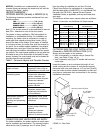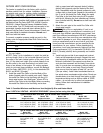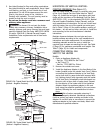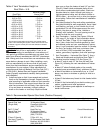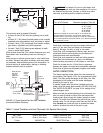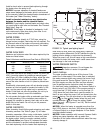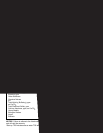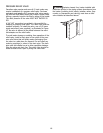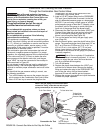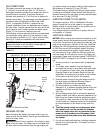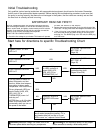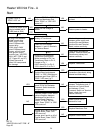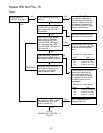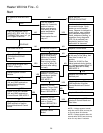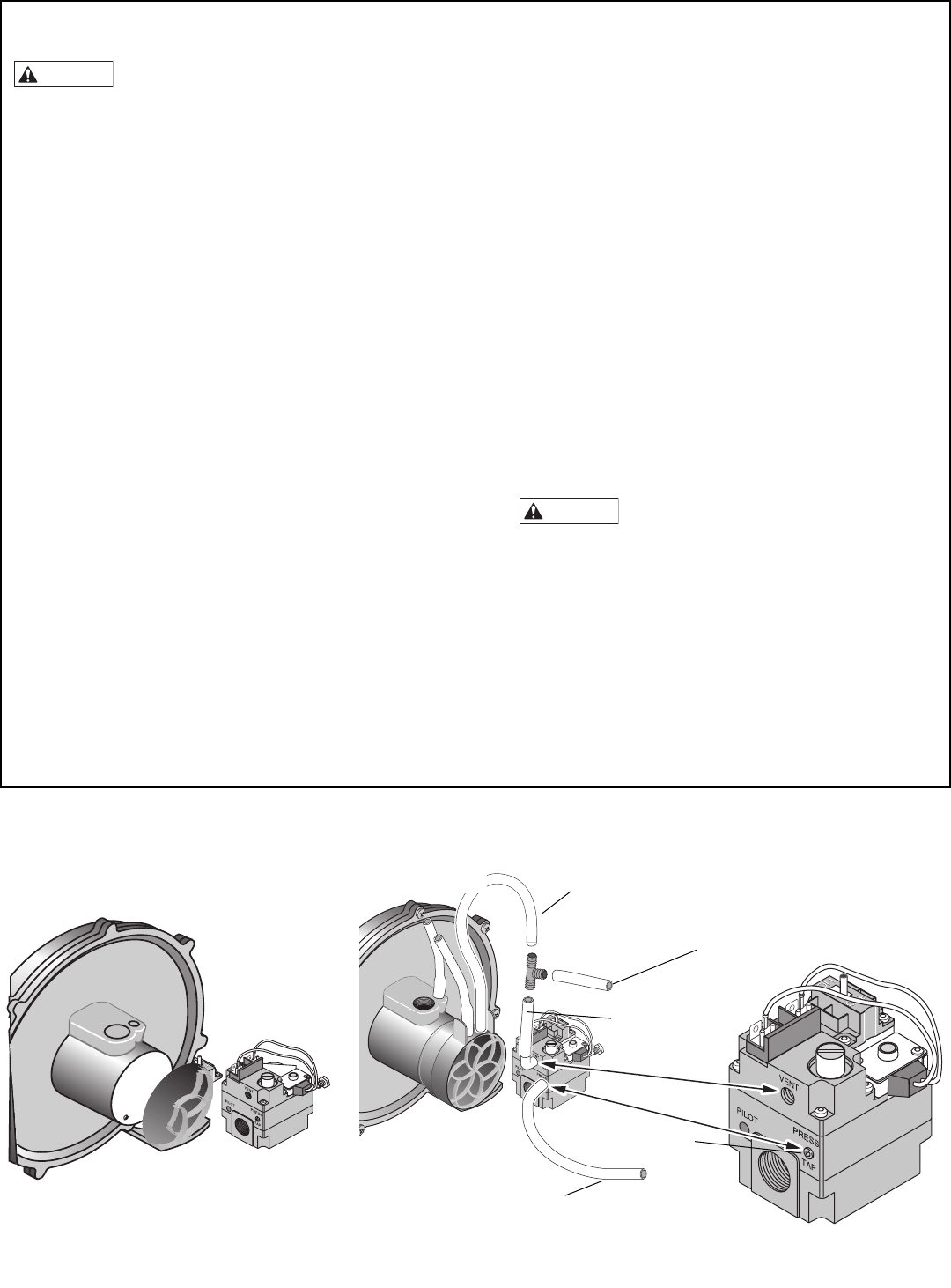
19
Risk of fire and explosion. Improper
installation, adjustment, alteration, service, or main-
tenance of the Combination Gas Control Valve can
lead to fire or explosion, causing loss of life, per-
sonal injury, or property damage.
These instructions are for the use of
qualified service technicians only!
Do not attempt this procedure unless you have
been trained and certified in the care and repair of
gas-fired appliances!
Do not attempt this procedure if the following
instructions are confusing!
This appliance is equipped with an unconventional gas
control valve that is factory set with a manifold pressure
of –.2" (–0.5cm) wc. Installation or service must be per-
formed by a qualified installer, service agency, or the
gas supplier. If this control valve is replaced, it must be
replaced with an identical control.
The combination gas valve incorporates dual shut-off
valves and a negative-pressure regulator. For proper
operation, the regulated pressure at the outlet manifold
of the valve must be 0.2" (0.5cm) wc below the refer-
ence pressure at the blower mixer inlet, and the gas
valve ‘VENT’ tap must be connected to the endcap air
orifice as shown in Figure 20.
Do not attempt to adjust the gas input by adjusting the
regulator setting. The correct gas regulator setting is
required to maintain proper combustion and must not be
altered.
To check that the gas pressure setting is correct, use
the following procedure:
1. Turn off the heater and remove the access door pan-
els for access to the Combination Gas Control Valve.
2. Use a 3/16" hex key to remove the plug from the
‘PRESSURE TAP’ port on the outlet side of the
Combination Gas Control Valve.
3. Install a 1/8" NPT barbed fitting into the ‘PRESSURE
TAP’ port. Use a flexible tube to connect it to the low
side of a differential pressure gauge or a slope gauge.
NOTICE: If you are using a slope gauge or a differ-
ential pressure gauge of less than 3" capacity, close
the shutoff valve of the gauge to avoid pulling the
liquid out of the gauge when the blower starts.
4. Disconnect the tube from the Gas Valve ‘VENT’ port.
Connect it to a tube with a tee running to the high
side of a differential pressure gauge and to the
blower’s air orifice grille (See Figure 20).
5. Turn on the heater and verify the gas supply pres-
sure (Page 20).
6. After the burner ignites, open the shutoff valve of the
gauge. The pressure gauge should then read 0.2" wc
±0.1" wc (0.5cm wc ± 0.25cm wc) (0.0" to 0.1" wc
(0.0 to 0.2 cm) = rich mixture; 0.3" (.75 cm) and
above = lean mixture). (Since the pressure tap is
connected to the low side of the gauge, the pressure
is actually negative.)
Risk of fire or explosion if Combination
Gas Control Valve is incorrectly adjusted. If it is nec-
essary to adjust the gas valve, this must be done
only by a qualified service agency.
7. Turn off the heater.
8. Replace the plastic hose between the ‘VENT’ port
and the inlet of blower mixer. Remove the barbed
fitting and replace the plug in the ‘PRESSURE TAP’
port of the gas valve, using a thread sealant
approved for use with natural gas and propane.
9. Replace the access door panels and cycle the heater
to check for proper operation.
WARNING
WARNIN
G
Instructions For Checking the Gas Pressure
Through the Combination Gas Control Valve
FIGURE 20: Connect Gas Valve to End Cap Air Orifice
NOTE: The gas piping and unions have been
omitted for clarity; make this test with all gas
piping connected (as for normal service).
To High Side
of Differential
Pressure Gauge
To Low Side of
Differential Pressure Gauge
To Air Flow Switch
Connection for Test
To Gas Valve Vent
Pressure Tap
Vent



